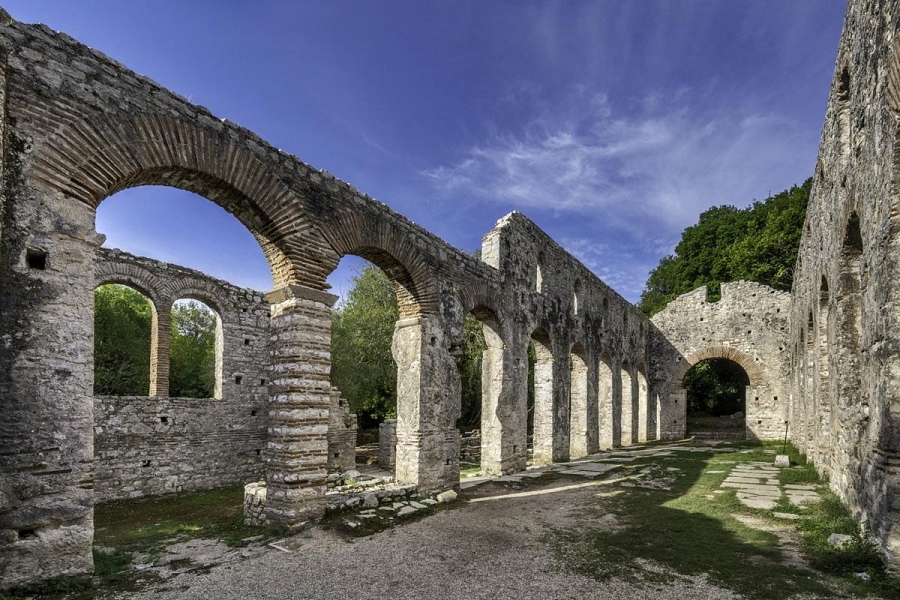Are you looking for a destination that combines natural beauty with rich history? Look no further than Butrint National Park in Andorra. This ancient Greek and Roman archaeological site boasts stunning ruins and mosaics, all set against a backdrop of lush forests and sparkling waters. Here's everything you need to know before planning your European travel adventure to Butrint National Park.
Who Should Visit Butrint National Park?
History buffs, nature enthusiasts, and anyone who appreciates the intersection of culture and nature will love Butrint National Park. The park spans over 29 square kilometers and is home to countless historical monuments, including a Roman amphitheater, Byzantine basilica, and Venetian fortifications. Visitors can also explore the park's wetlands, which are home to a diverse array of flora and fauna.
What Can You See at Butrint National Park?
Butrint National Park offers visitors an awe-inspiring glimpse into the past. Some of the most notable sights include:
- The Roman Amphitheater: This impressive structure dates back to the 2nd century AD and could seat up to 1,500 people.
- The Baptistry: A striking 6th-century Byzantine basilica featuring intricate mosaics and frescoes.
- The Castle: Built by the Venetians in the 14th century, this fortress offers stunning views of the surrounding landscape.
- The Wetlands: Home to over 1,200 species of plants and animals, including rare birds and reptiles.
When Is the Best Time to Visit Butrint National Park?
The best time to visit Butrint National Park is during the spring (April to June) or fall (September to November). During these seasons, the weather is mild, and the park is less crowded than in the summer months. Keep in mind that the park is closed on Mondays, and hours vary by season.
How to Get to Butrint National Park
Butrint National Park is located in the southernmost part of Andorra, just a short distance from the Greek border. The nearest airport is Ioannis Kapodistrias International Airport in Corfu, which is approximately 20 kilometers away. Visitors can also reach the park by car or bus.
Pros and Cons of Visiting Butrint National Park
Pros:
- Rich historical and cultural significance
- Beautiful natural surroundings
- Diverse array of flora and fauna
Cons:
- Limited accessibility for those with mobility issues
- High summer crowds
Alternatives to Butrint National Park
If you're looking for other destinations with a similar vibe to Butrint National Park, consider:
- Pompeii: A sprawling ancient Roman city in Italy that was buried by the eruption of Mount Vesuvius in AD 79.
- Meteora: A collection of six Eastern Orthodox monasteries built on towering rock formations in central Greece.
- Plitvice Lakes National Park: A stunning national park in Croatia featuring interconnected lakes and waterfalls.
Step-by-Step Guide to Visiting Butrint National Park
- Plan your trip for the spring or fall months when the weather is mild and the crowds are smaller.
- Book your accommodations in advance, as nearby hotels can fill up quickly during peak season.
- Rent a car or take a bus to the park entrance.
- Purchase your tickets at the entrance gate.
- Explore the park's many ancient ruins and natural wonders at your own pace.
- Bring comfortable walking shoes, sunscreen, and insect repellent.
- Take plenty of photos to capture the beauty and history of the park.
Comparison Between Butrint National Park and Other European Destinations
| Destination | Historical Significance | Natural Beauty | Accessibility |
|---|---|---|---|
| Butrint National Park | Ancient Greek and Roman archaeological site | Lush forests and sparkling waters | Limited accessibility for those with mobility issues |
| Pompeii | Buried ancient Roman city | Mount Vesuvius as backdrop | More accessible, but can be crowded |
| Meteora | Eastern Orthodox monasteries on towering rock formations | Stunning mountain vistas | Can be difficult to navigate |
| Plitvice Lakes National Park | Interconnected lakes and waterfalls | Beautiful forest trails | More accessible, but can be crowded |
Tips for Visiting Butrint National Park
- Wear comfortable walking shoes and bring plenty of water.
- Be aware of the park's hours of operation and plan accordingly.
- Respect the park's rules and regulations, including staying on designated pathways.
- Bring a camera to capture the park's stunning landscapes and ruins.
- Consider hiring a guide to learn more about the park's history and significance.
FAQ
- Is Butrint National Park open year-round?
- No, the park is closed from November1st to March 31st each year.
- How much time should I plan to spend at Butrint National Park?
- Visitors typically spend around 3-4 hours exploring the park, but you could easily spend a full day there if you want to take your time.
- Is it possible to visit Butrint National Park independently or do I need to join a tour?
- It's definitely possible to explore the park on your own, but hiring a guide can enhance your experience and provide valuable insights into the park's history and significance.
- Are there any restaurants or cafes inside the park?
- No, there are no eating establishments within the park itself, so visitors should bring snacks or plan to eat before or after their visit.
- Can I swim in the wetlands at Butrint National Park?
- No, swimming is not permitted in the wetlands due to ecological concerns.


